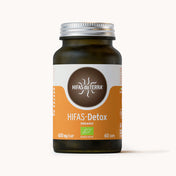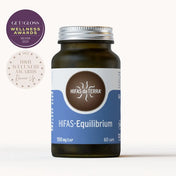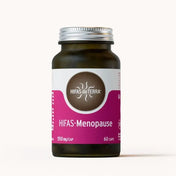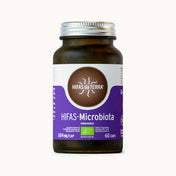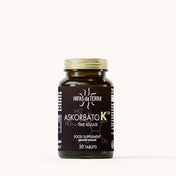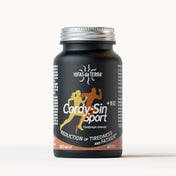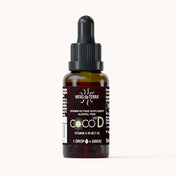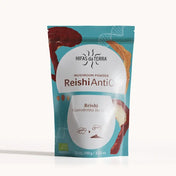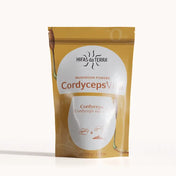TABLE OF CONTENTS
What is histamine
Let’s Talk About Seasonal Allergies, Pollen in the Environment and Why Certain People do not enjoy spring or are hypeserSitive to grasses and mites ... if we delve into this question, we eat to histamine, The Substance Behind Many Process Related To HIVES, Runny Nose, Excess Mucus, and Allergic inflammation. Let’s See Why.
One of the Most Revealing Issues Is That, Lift What One Might Think, histamine is a substance present in the tissues of Our Body. In the late 1920s, a Group of Researchers Found This DERIed STIS Name Histós, Which Means "Tissue" in Greek.Spinning Thinner, We Can Say That Histamine Is Found Naturally in The Cells of Our Immune System, Specifically Mast Cells and Basophils (Among Others). According to Research, It is a Fundamental Mediator of The Allergic Response.
Of Note: At The Biochemical Level, histamine (C 5 H 9 N 3 ) is classified as an amine (It has the structure of ammonia (NH 3 ) and is formed from the elimination, in the form of co 2 , of Compounds of Amino Acid Histidine Carboxyl.

What Functions does histamine Have?
As explained by the Spanish Society of Clinical Immunology, Allergology and Pediatric Asthma (Seicap) on its website, when a person reacts to common Allergens Such as Pollen, mites, etc.. you produce IgE (Immunoglobulin e) Antibodies Against That Substance. If Said Allergen Estrars The Body, Antibodies Bind To It and Can Trigger The Release of Substances Such As histamine, which may be responsible for the appearance of symptoms such as coughing, Hoerseness, Wheezing, Sneezing, Itching, Tearing, Reddening of Eyes, Hives, Inflammation ...
Mast Cells and Basophils are Immune Cells Vry present in the skin and mucous membranes. These are responsible for Storing histamine-Containing Granules Released in Response to Various Stimuli. Immunoglobulin E (IgE) is a molecule promoting histamine relaase.
Research Carried Out in The 1930s Allowed Progress in Developing The First Antihistamines. These drarugs block the Effects of histamine but also allow more details about histamine to be discovered. The Sedative Effect Dercedid From Them Determined That Histamine Not Only has to do with the immune responsibility but also intervenes in the Central Nervous System (CNS), where it participates in regulating various function function as Sleep, Locomotor Activity and Even in Memory and Learning.

What are ITS Effects?
In the article Histamine and Intercellular Communication: 99 Years of History, The Scientific Community’s Most Relay Evidence is collected since, in 1910 The English Dale and Laidlaw Extracted Histamine From Ergot. As We Already Explained, When Cells Release histamine, It Binds to Their Receivers and Produces Different Responses depending on the receiver It Activates and The Tissue affected. We already I mentioned Runny nose, Itching and Hives, But It is not the only Associated Symptomatology. Through Four Types of histamine receivers in Our Body, We Can see oHher Effects Resulting from its relaase:- H1. Location: Smooth muscle, endothelial Cells, Medulla of Adrenal Glands, Heart, and CNS Main Effects of Receiver Activation: Allergic Respons, Smooth Muscle Contraction, Hormone Release, and Regulation of the Sleep-Wake Cycle
- H2. WHERE IT IS LOCATED: Gastric Parietal Cells, Smooth Muscle, Suppressor T Cells, Neutrophils, Heart, Uterus, and Cns Main Effects of Receiver Activation: Stimulation of Gastric Acid Secret
- H3. WHERE IT IS LOCATED: CNS AND NERVES TO THE HEART AND GASTROINTESTINAL TRACT Main Effects of Receiver Activation: Inhibition of the Synthesis and Release of histamine and other neurotransmitters
- H4. WHERE IT IS LOCATED: Bone Marrow, Leukocytes, Neutrophils, Eosinophils, Mast Cells, and Lung

Published Evidence Shows That People With Low Activity of this Enzyme Cannot Break Down The Exogenous histamine We Consume from Our Food. This excess could causes migraines and other symptoms that we have already discussion, suck as intestinal problems, atopic skin, fatigue, etc., scholause it was used unleash the processs we explain in the receptors.
WHY IS THEING TALK OF HISTAMINE-RELEASING FOODS?
One of the guides prepared by the seicap indicates that certain foods that contain substances Such as vasoactive amines such as histamines Can Trigger Symptoms that, Without Being So, Could Be confused with an allergic reaction. They call it "False Allergising Foods," Although they are foods consider Release histamine. Among Others, these are the foods mentioned by the Medical Society:
- tuna
- chocolate
- Strawberries
- Tomato

Why do we talk about histamine in allergies?
One of the First Lines of Research On histamine was to involvement in allergic responsible. According to Research Carried Out By Lewis (1924), The Release of Histamine Gives Rise to a Triple Response in Which The Following Are Common:
- Central Erythema
- Oedma
- Peripheral Erythema
ACCORDING TO THE REVIEW PUBLISHED IN 2009, This Triple Response is Mainly Involved in H1 and H2 Receivers. The AForementione Erythema Can Cause Reddening of the Skin, A Drop in Blood Pressure and Peripheral Resistance. In Addition, When the H1 is Activated, The Conditions for Oedema and Pruritus are produced.
As A Result of This Research, Antihistamines Were Developed, Capable of Blocking H1 Receivers and with Positive Results In Rhinitis, Conjunctivitis, Pruritus, and Atopic Dermatitis ...
What are antihistamines
You are Drugs Base Their Effect, Fundally, on The Blockade of H1-Type Histamine Receivers which, as we have seen, you have got them on the Allergic Response, Smooth Muscle Contraction, Hormone Release, and Regulation of the Sleep-Wake Cycle.
First and Second-Generation Antihistamines
First generation
The First-Generation Drugs Are Lipophilic, Capable of Easily Entering Cells. Consencly, STIs Absorption and Metabolization Is Rapid, So It Must Be admission Frequently, 4 or 4 Times to Day. They Also Causan Side Effects, Such As Sedation and Seizures.
Second Generation
On the other hand, The Second Generation Ones Have Been Developed in The Last 25 Years. Subj derive from the first generation, But with a Clear Difference: The Reduction of Sedative and Anticholinergic Effects. Safe this, they are not exempt from Side Effects, specially If they are administered with other drarugs.
WHY TALK ABOUT THE RELATIONSHIP BETWEEN HISTAMINE, ALLERGIES AND THE DIGESTIVE SYSTEM?
We already Know That histamine is a mediator in Allergies But is also involved in inflammatory Bowel Disease. This is underlined by an article published in 2005 in which, in addiction, high levels of histamine were observed in patients with crohn’s disease and ulcerative colitis. Among Other Arguments, The Authors Argue that Three of the Four histamine recets were discovered in the Digestive System, Showing that This Amine Could has acted on the intestinal tract. MORE Specific Investigations on The Type of H1 Receiver have confirmed that histamine might be Responsible for Diarrhoea in inflammatory Bowel Disease and Food Allergies.

Are there foods and/or compounds with antihistamine capabilities?
Beta-Glucans
These polsaccharide compounds present in foods such Mushrooms, Certain Cereals and Algae Have Been Studied Mainly for Their Action on The Immune System. A STUDY PUBLISHED IN THE FOOD SCIENCE & NUTRITION MAGAZINE OBSERVED THAT SUPPLICATION WITH Formulas With Beta-Glucans Reduced Allergy Symptoms by 28% and Their Severity by 52%. The Conclusions of this Study Also Indicated Overall Improvements reported by trial participants. They poined out improvories in Sleep Disorders, Energy Levels and Reduction of Symptoms Related to Runny Nose, Red Eyes, Congestion, etc.
Bromelin
A Study Published in 2013 Showed That This Enzyme Present in Pineapple Could Reduces Sensitization to Allergic Processions in Which the Airways Are Involved, Thanks to ITS Anti-Illergic and Anti-InflamMacy Action.
Quercetin
This Compound Is Found in Many Foods of Plant Origin, But It Stands Out in Broccoli, Apples, Grapes and Tea. Quercetin Stands out for STIs Antioxidant Capacity. ACCORDING TO THE STUDY QUERCINTIN AND ITS ANTI-ELLERGIC IMMUNE RESPONSE, PUBLISHED IN 2006, QUERCETIN CAN REDUCE THE SLEEASE OF HISTAMINE AND CONTRIBUTE TO THE REDUCTION OF INFLAMMATORY PROCESSES.
Vitamin c
Several Studies have evaluated the Relationship Between Vitamin C and histamine metabolism. An article published in 2015 indicates that ascorbate has to Unique Ability to Break Down This Substance. Previous Publications on Human Trials Show That Taking Vitamin C Significantly Lowers Plasma Histamine Levels. In Animal Models, The Decree in Bronchoconstriction Caused by Histamine Has Even Been Documented.
In Summary ...
Histamine Is More than A Substance Involved in inflammation and allergy. In This Brief Review, We have highlyted SCIENTIFICE ARTICLES IN WHICH ITS Role As a Neurotransmitter, Hormone and Regulator of the Immune System Would Be Demonstated.
